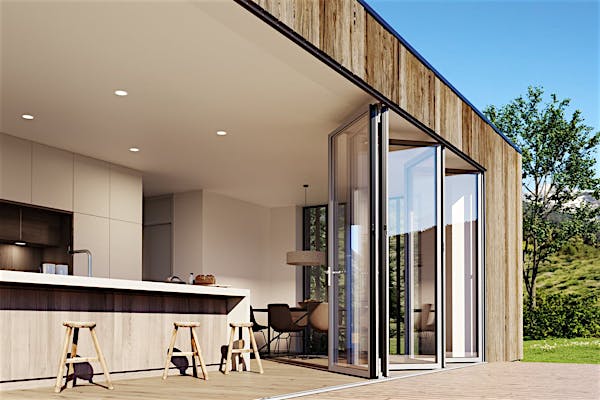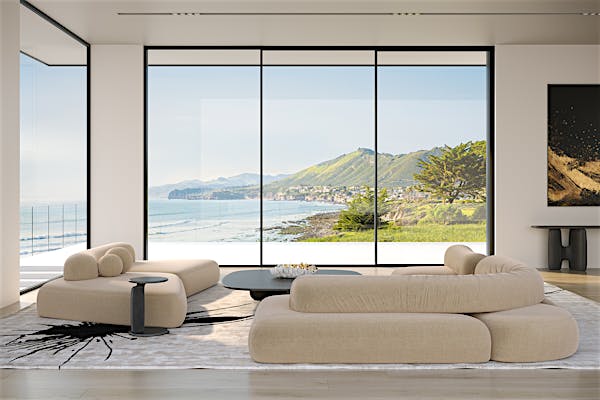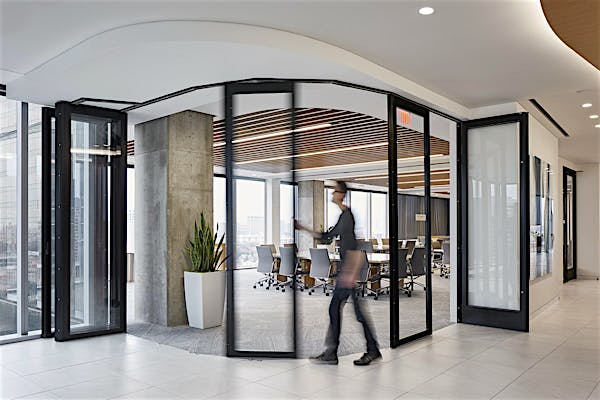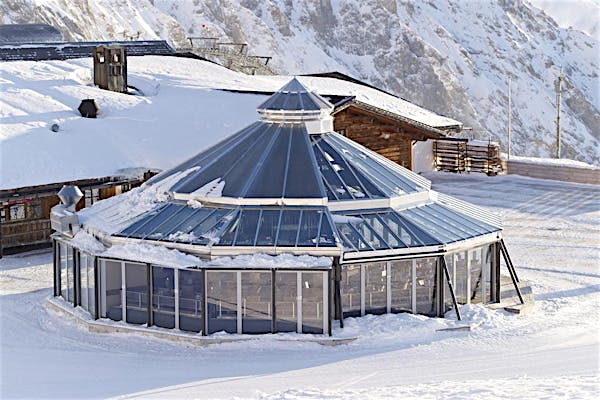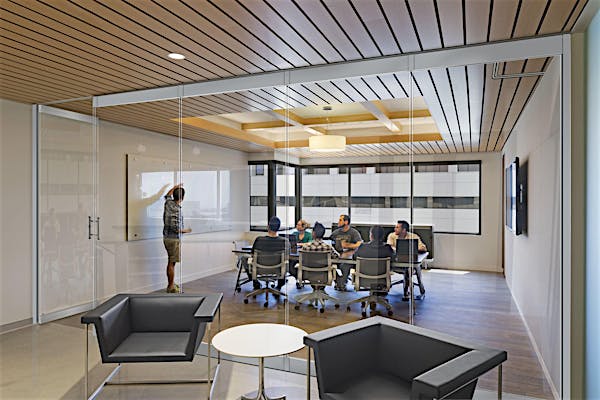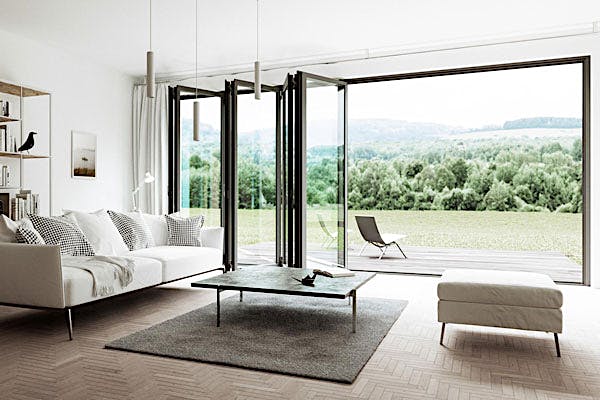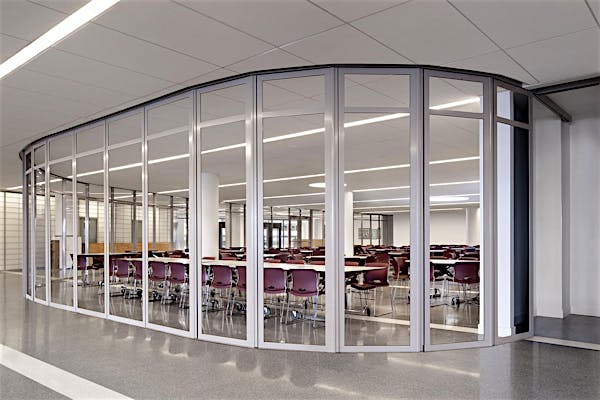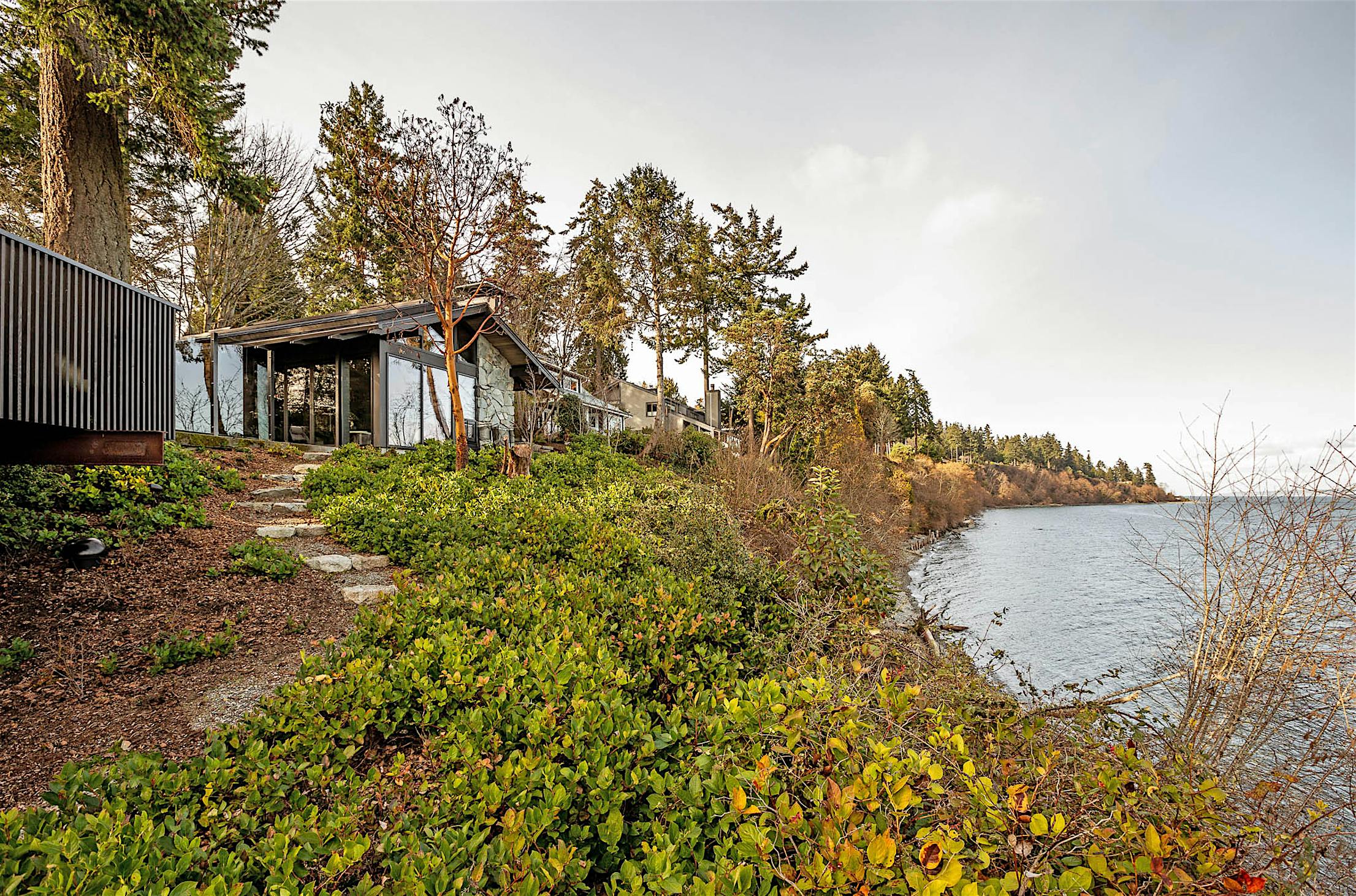
Originally built in the 1960s, this mid-century home is the first renovated home to achieve Living Building Challenge certification, a program that aims to promote sustainability in the built environment. Loom House, perched on a bluff overlooking Puget Sound, is composed of two structures acting as the main house and a guest house with sprawling NanaWall bifold glass walls that doubles as a home office. The two buildings are connected by a partially shaded deck stretched between them. The property’s newest owners sought to enhance the home’s connection to its immediate ecosystem and enlisted the expertise of The Miller Hull Partnership to renovate the existing structures into a sustainable property that made use of its surrounding natural resources.
Building Sustainably with Bifold Glass Walls
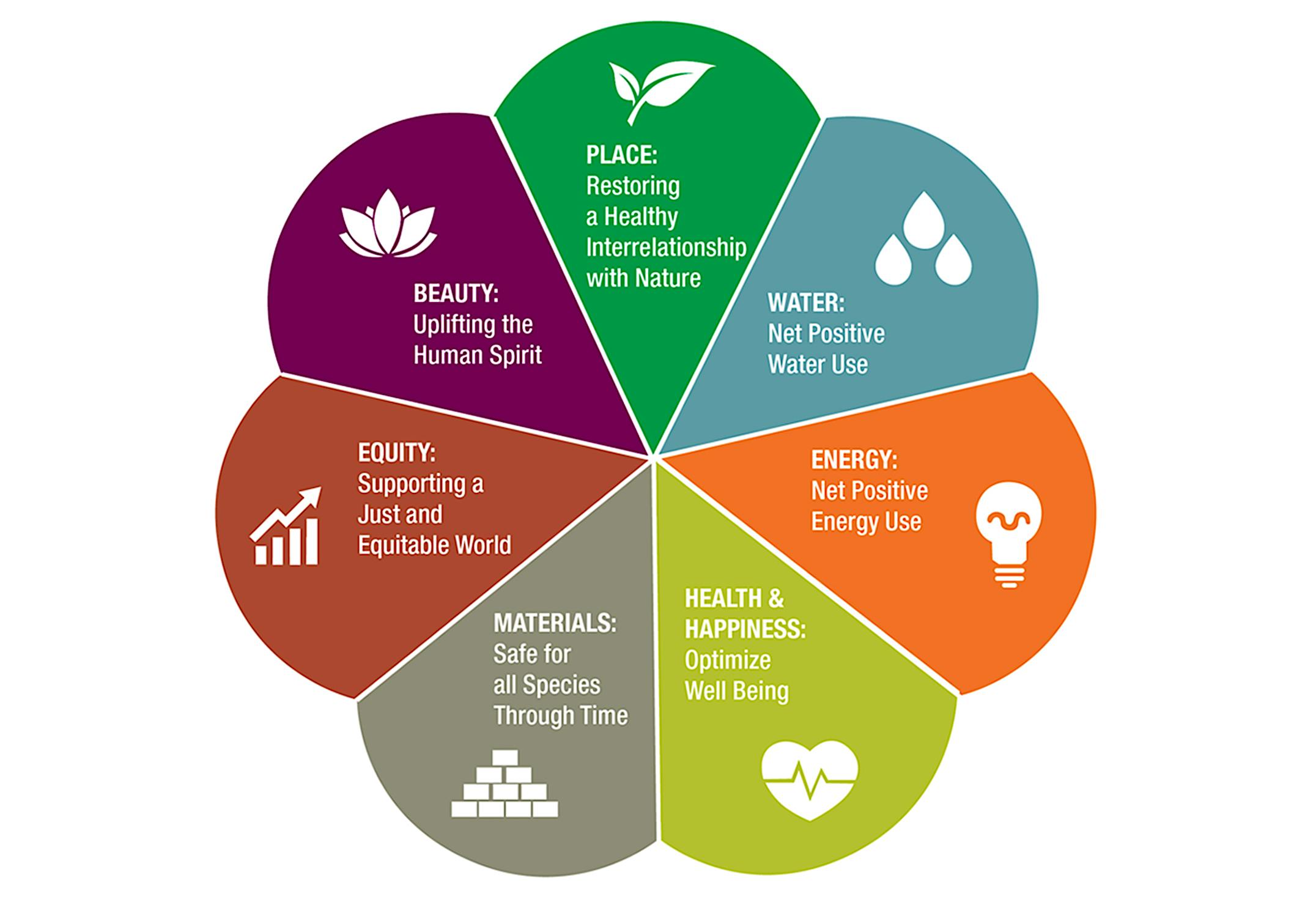
Figure 1 Image courtesy of Williams College
What is the Living Building Challenge?
According to the International Living Future Institute, living buildings are regenerative buildings that connect occupants to light, air, food, nature, and community. They are self-sufficient and remain within the resource limits of their site and create a positive impact on the human and natural systems that interact with them. The Living Building Challenge (LBC) asks the question: what if every single act of design and construction made the world a better place? This is what the seven petals of the LBC entail:
- Place: Restoring a healthy interrelationship with nature.
- Water: Creating developments that operate within the water balance of a given place and climate.
- Energy: Relying only on current solar income.
- Health and Happiness: Creating environments that optimize physical and psychological health and well-being.
- Materials: Endorsing products that are safe for all species through time.
- Equity: Supporting a just and equitable world.
- Beauty: Celebrating design that uplifts the human spirit.
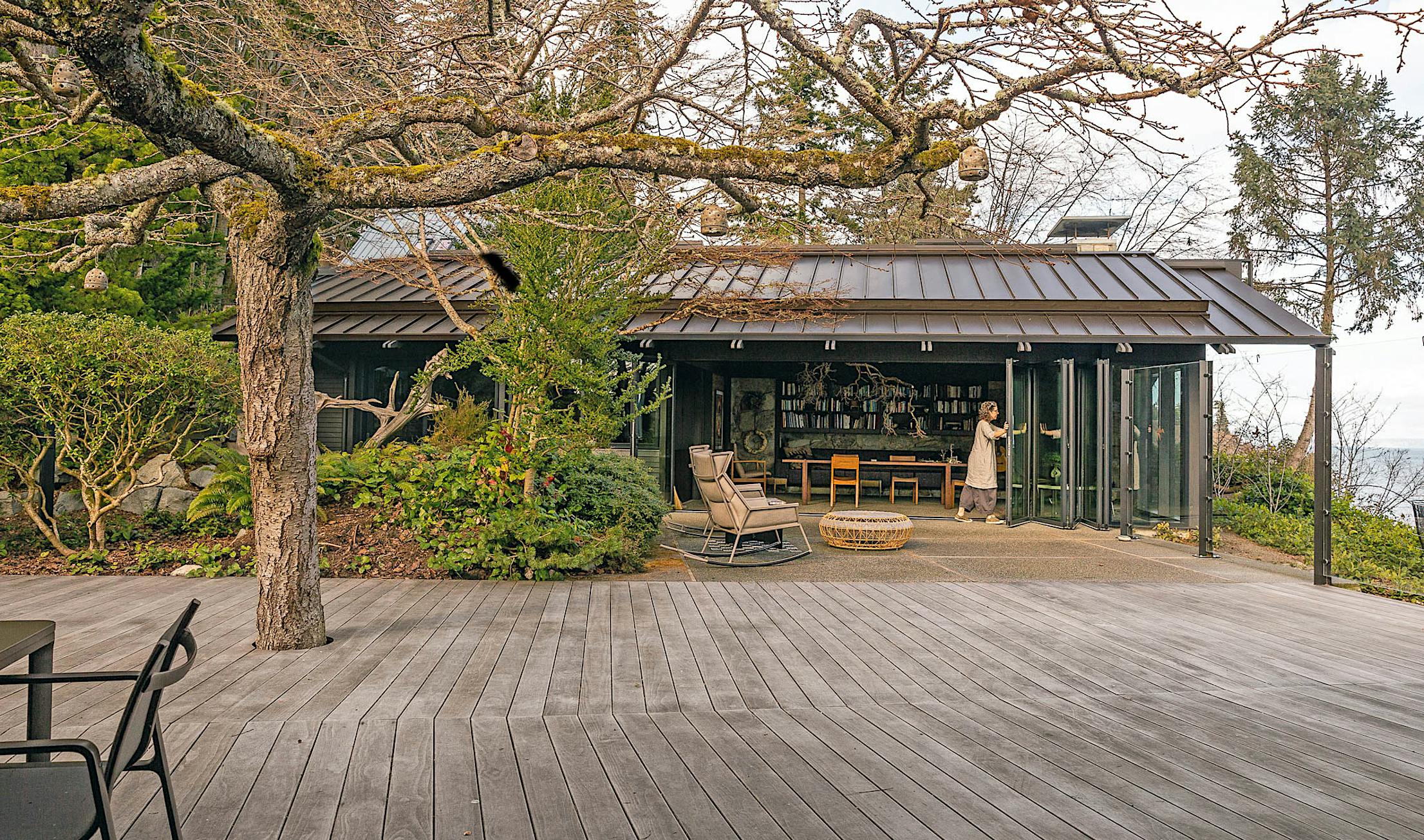
Meeting Sustainability Standards
From the beginning, the homeowners wanted to focus on building sustainably by implementing Net-Zero energy standards with an interest in exploring other green building programs that could enhance their ambitious sustainability goals. Architect Brian Court from The Miller Hull Partnership introduced other green building programs with what he describes as “the Holy Grail at the end” being the Living Building Challenge. “Even though it is a huge challenge, we were so inspired—we had to say yes right away,” said the homeowner in a recent Dwell feature. The first hurdle was overcoming the local building regulations that prohibited on-site water treatments. The other challenge was ensuring that every material utilized in the renovation stayed away from the “Red List.” Red List building materials are those that contain chemicals that have been deemed harmful to humans and the environment.
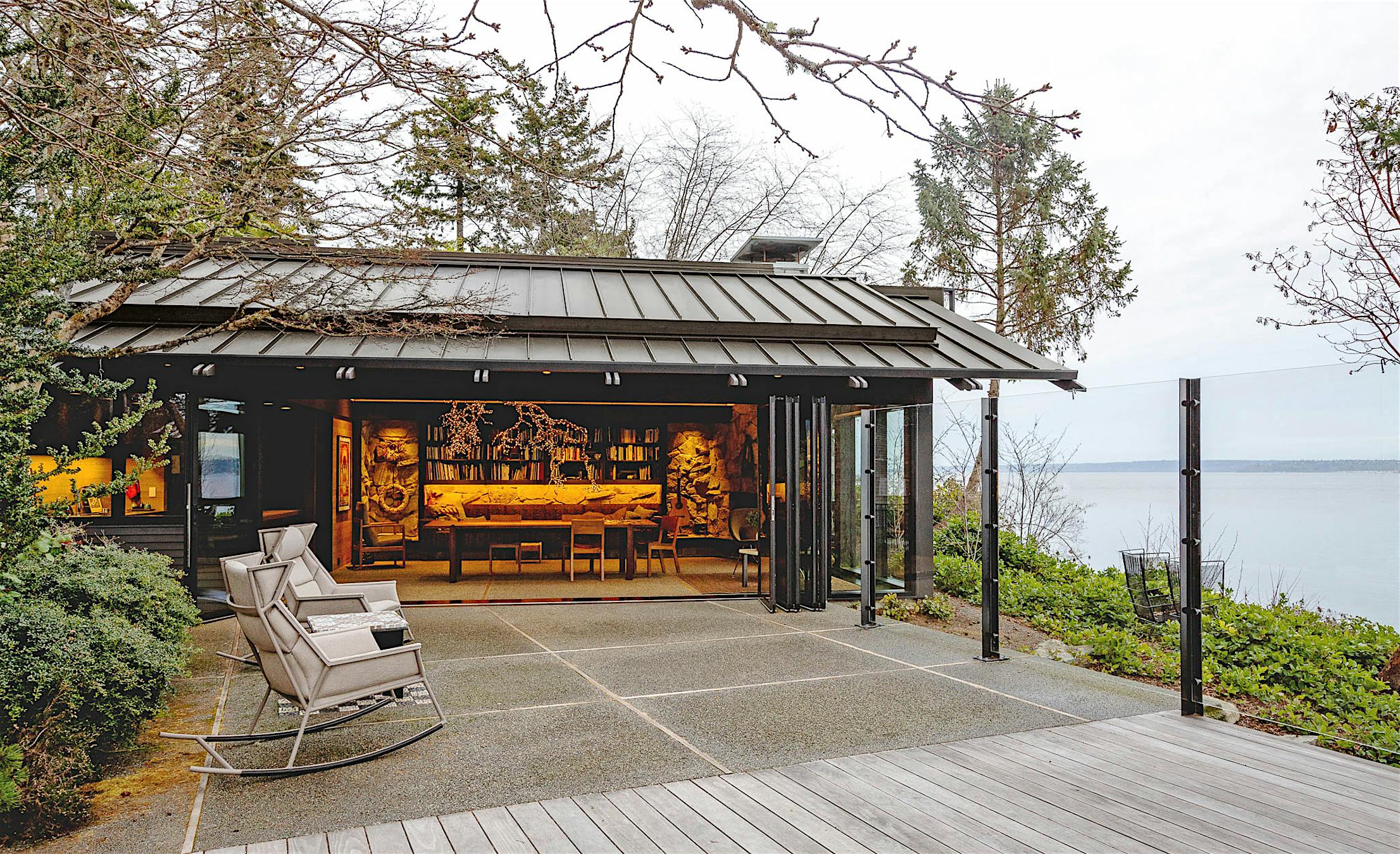
Renovation Stage
The remodel sought to preserve the shells of the two existing buildings while reimagining the spaces to be more open and in synergy with the landscape. The house met LBC standards for net-positive water and on-site water treatment. Water is collected on the rooftop and stored underground in a fiberglass cistern capable of holding up to 10,000 gallons. The water is then purified via a filtration system before reaching the home for usage. Additionally, a septic tank featuring a textile filter scrubs gray water and blackwater for irrigation and other non-potable uses. To meet net-positive energy, an array of 42 solar panels supplies 105 percent of the home’s energy while two wall-mounted batteries store backup power.
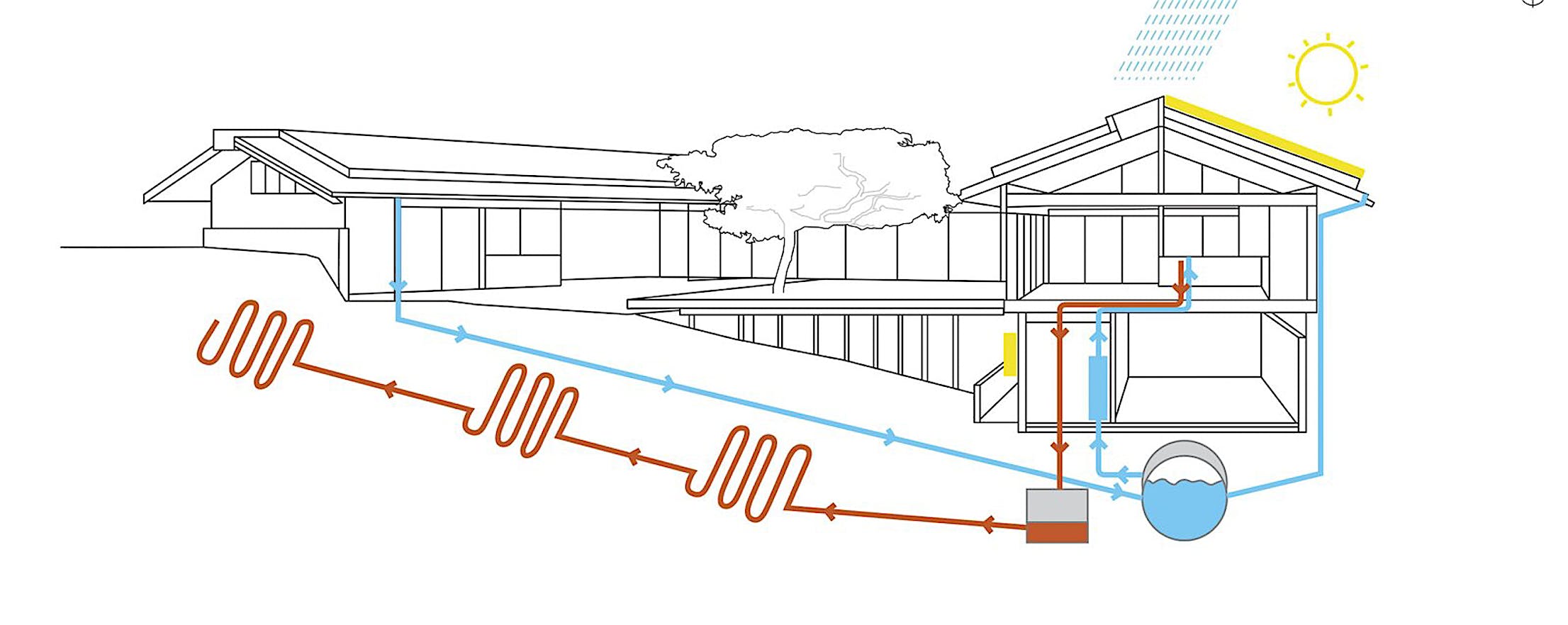
Figure 2 Image courtesy of Dwell
Connecting to the Environment
“In some ways the strongest attributes of the house are probably the outside spaces,” says the architect. The team, too painstaking, cared to preserve and enhance the existing flora going as far as relocating an over 6,000-pound Chinese dogwood tree and weaving in mushrooms into the vegetation to help meet the LBC urban agriculture requirement. With its proximity to the water and first-row-seat views to Puget Sound, not to mention abundant greenery, there is truth to that statement. Triple glazed windows and skylights throughout the home offer energy efficiency and protect interiors from the cold, including the 19 ½ foot-wide NanaWall accordion glass doors system in the guest house.
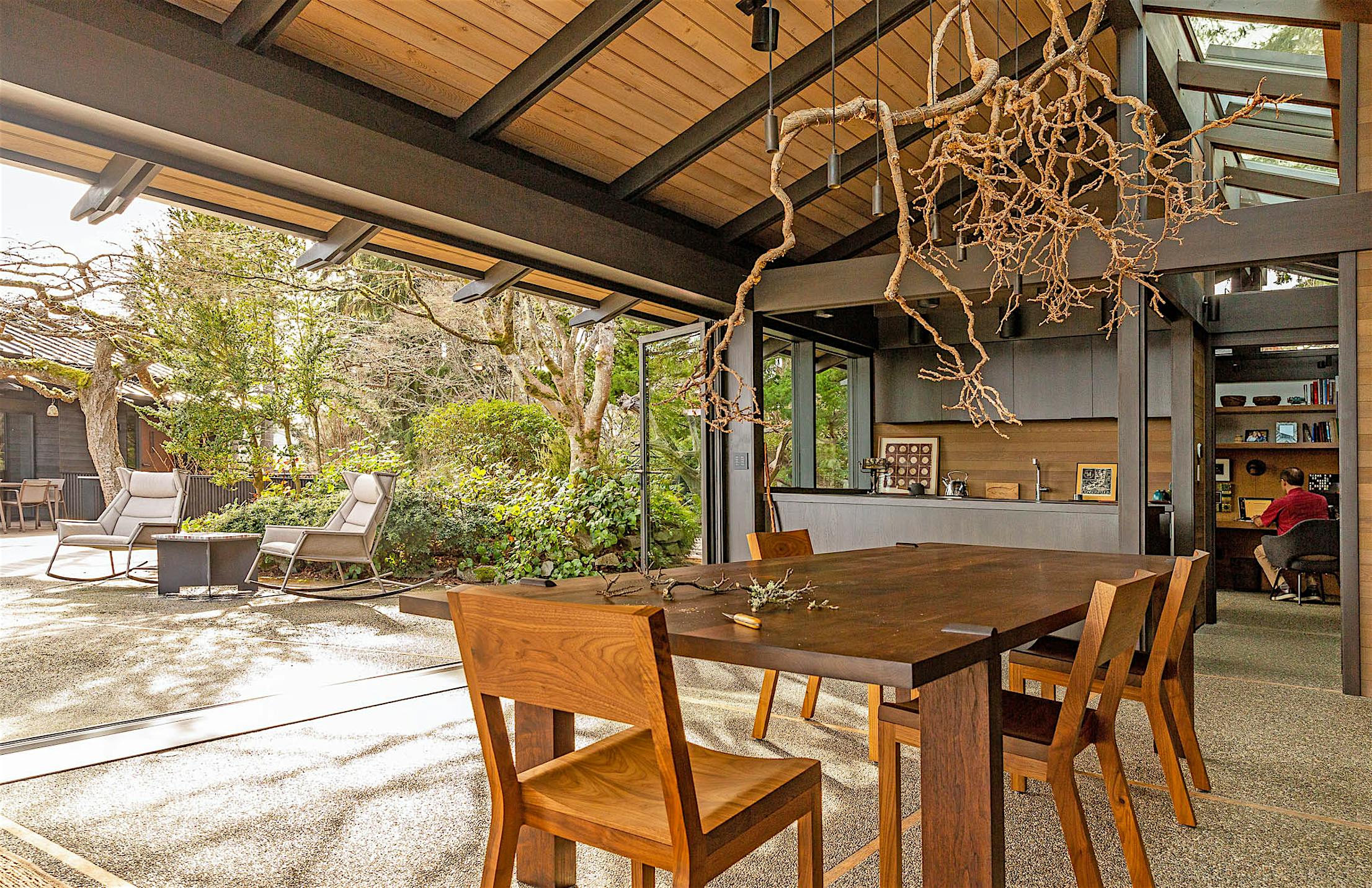
Biophilic Design with NanaWall Bifold Glass Walls
Key to the renovation was immersing the home with its immediate natural surroundings. To get to the house, one must first traverse a bridge through the luscious trees before entering the home. Large triple glazed expanses of glass were used to maximize views to the water and the gardens enriched with native plants while skylights optimize natural light to diminish reliance on electricity. In the guest house, six-panel aluminum framed NanaWall SL60 accordion glass doors completely open the space as if it were an extension of the central courtyard. The 1,200 square foot smaller structure that was added to the property at a later time now serves as the couple’s guest house, library, and home office. The nearly twenty-foot wide bifold glass walls easily open all the way and neatly stack on one side to create a seamless transition to the central courtyard. Indoor and outdoor areas become one while the homeowners are able to reap and optimize the benefits of natural daylight and fresh air ventilation in the multifunctional space.
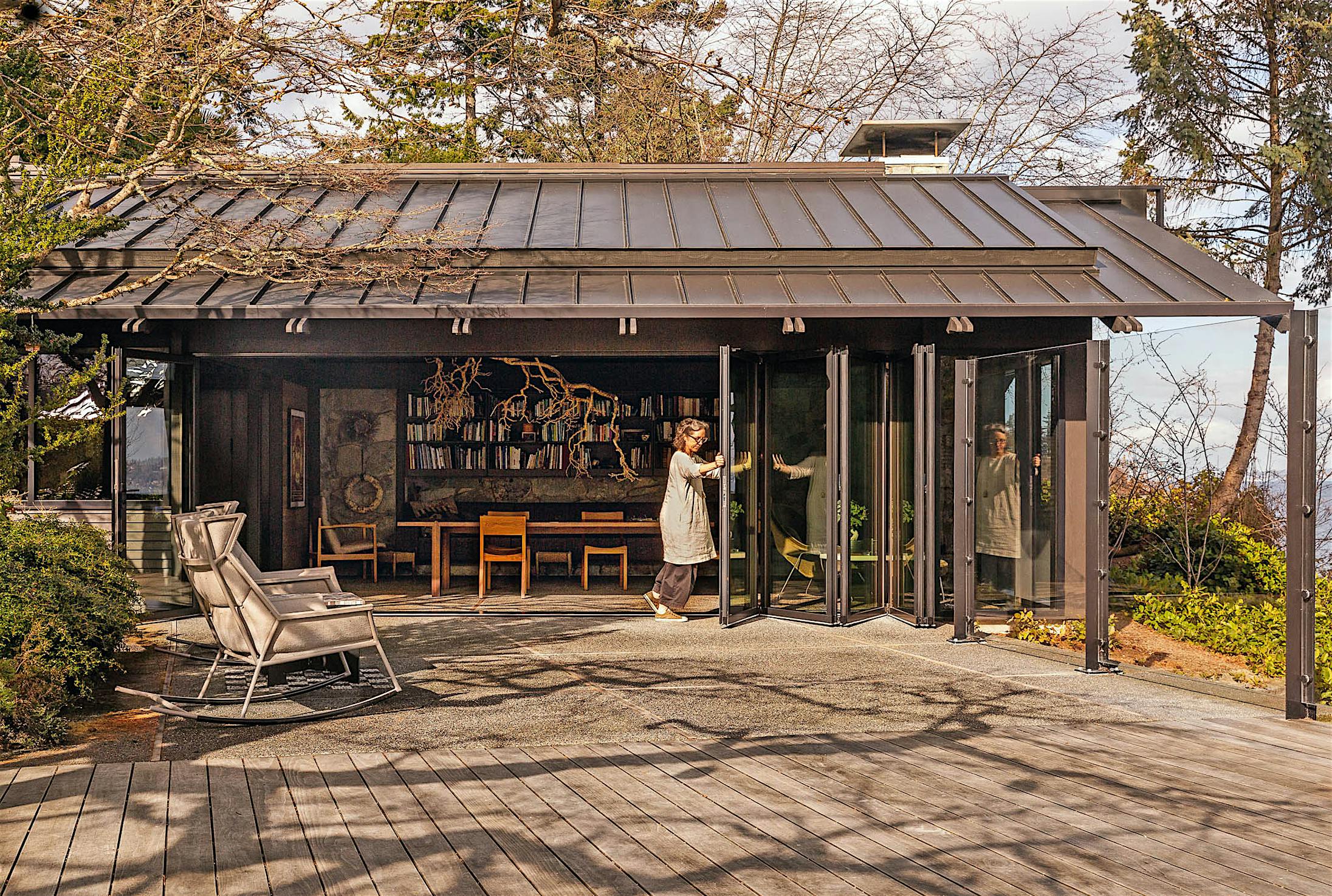
The NanaWall Difference
Designed for energy efficiency and strong weather performance, the aluminum framed NanaWall SL60 accordion glass doors feature an all-aluminum design that incorporates an insulation barrier built-in, supporting the home’s energy efficiency goals. This system can accommodate triple-paned glass for optimal weather performance in the harshest of Pacific Northwest weather. Furthermore, the floor supported system was specified with a thermally broken low profile saddle sill, which features a unique Gothic arch roller design for ease of operation and a ramp design with flanges to create barefoot-friendly transitions. Each system has been independently tested for air, water, structural, and even acoustics with excellent results and can be customized to meet any aesthetic needs.
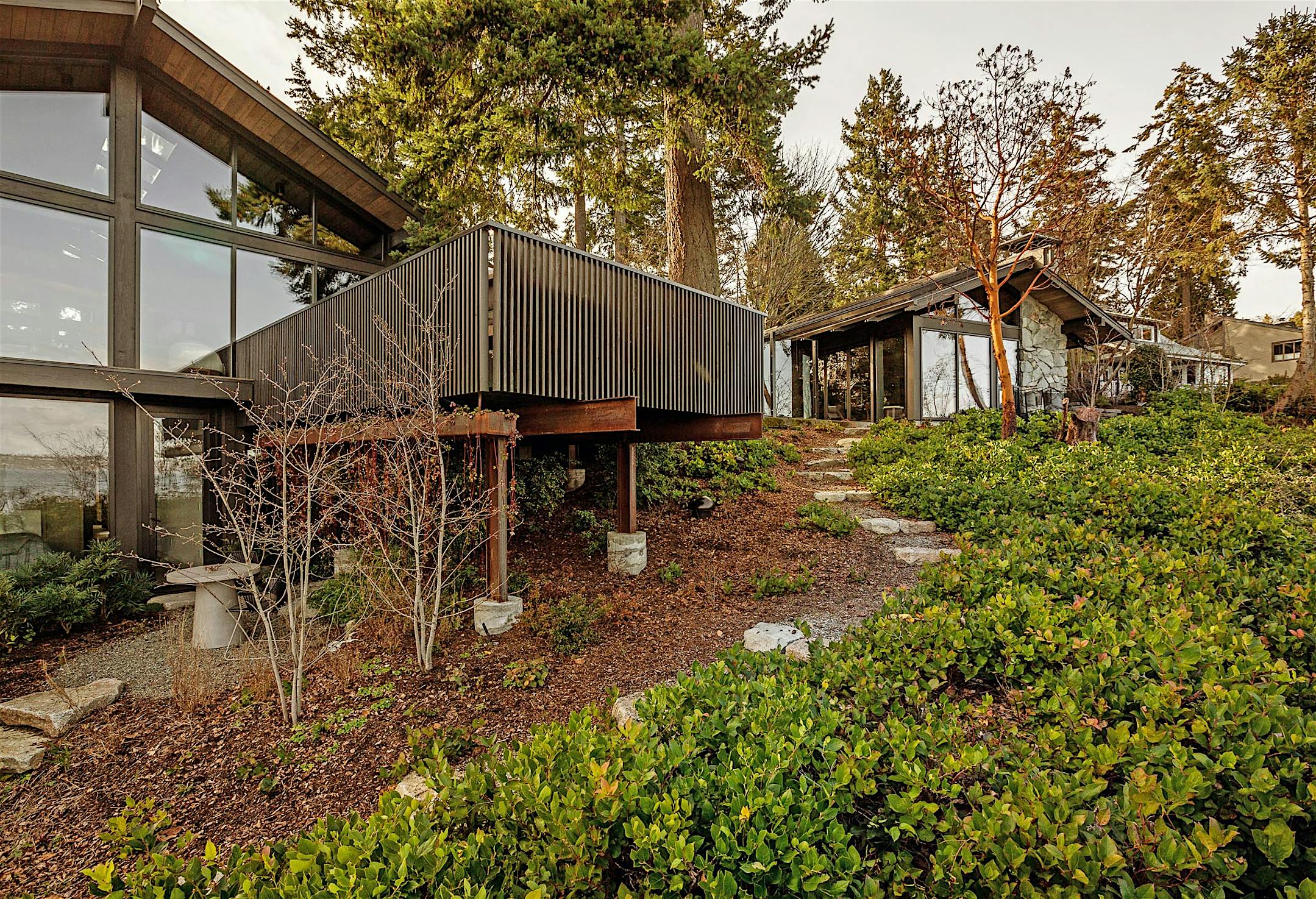
Final Thoughts
The renovation was completed in November 2019, and it took nearly fourteen months to achieve Living Building Challenge certification. The transformed property now boasts a forward-thinking living approach that emphasizes the possibilities of living sustainably. From the NanaWall accordion glass doors in the guest house to the new wood-covered steel bridge leading up to the entrance, every product and material was carefully selected to preserve the home’s original mid-century style while blending in modern-day systems and products. The property now stands as a testament that building sustainably is attainable. “We need to figure out how to save the beauty, the history, the connection to nature that is embodied in this style of architecture,” says the homeowner. “It’s a thing worth saving.”
Learn more about the biophilic benefits of NanaWall bifold glass walls at NanaWall.com!
